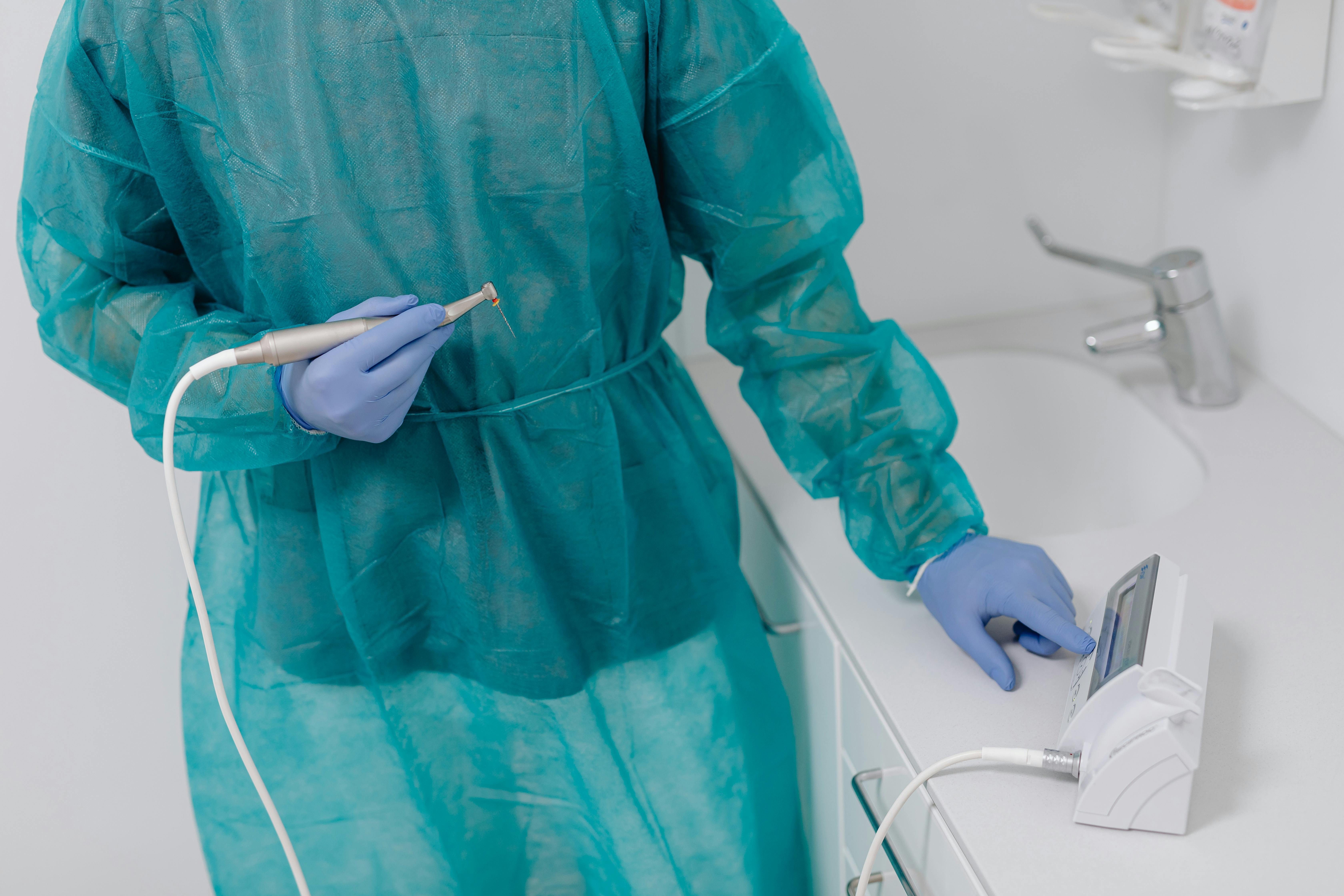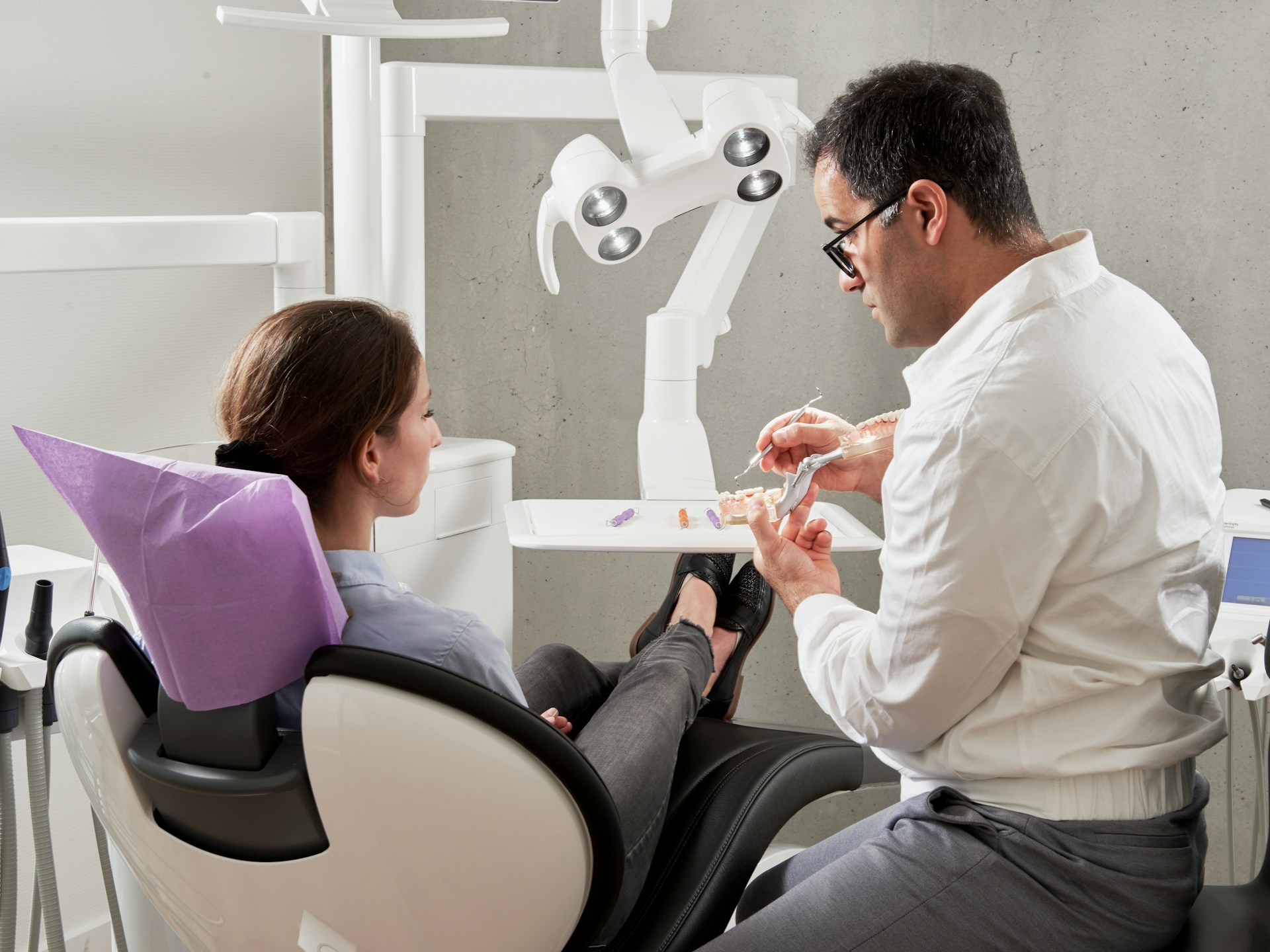How Much Do Dental Clinics Make in North Carolina – 2025

Dental clinic profitability in North Carolina varies significantly based on location, services offered, and operational efficiency. Practice owners and dental professionals need accurate financial data to make informed business decisions and set realistic revenue expectations.
Dental clinics in North Carolina typically generate annual revenues between $500,000 and $2 million, with urban practices often achieving higher earnings than rural locations. Multiple factors influence these numbers, including patient volume, specialty services, overhead costs, and local market conditions. Understanding these revenue drivers helps dental professionals optimize their practice performance and identify growth opportunities in the competitive North Carolina dental market.
1) Average annual revenue of dental clinics in North Carolina ranges from $500,000 to $2 million
Dental practices in North Carolina generate substantial annual revenue that varies significantly based on practice size and location. Solo dental practices typically earn $500,000 to $750,000 per year across the United States.
Multi-doctor practices and specialty clinics in North Carolina's high-income areas often exceed $1 million annually. Urban practices in cities like Charlotte and Raleigh tend to generate higher revenues than rural locations.
Practice size directly impacts revenue potential. Single-dentist offices usually fall on the lower end of the revenue spectrum. Larger practices with multiple providers can reach $2 million or more annually.
General dental practices nationwide generate revenues from $500,000 to $1.5 million annually. North Carolina practices follow similar patterns with additional factors like local population demographics and competition levels affecting earnings.
Specialty services boost revenue significantly. Practices offering oral surgery, periodontics, or cosmetic dentistry typically earn more than general dentistry alone. Location within North Carolina's metropolitan areas versus rural counties creates notable revenue differences for dental practices.
2) Geographic location impacts clinic earnings, with urban areas like Charlotte generating higher income.
Dental clinics in North Carolina see major income differences based on where they operate. Urban areas consistently generate higher revenue than rural locations.
Charlotte dental practices earn significantly more than clinics in smaller towns. The city's large population and higher income levels create more demand for dental services.
Rural dental offices face multiple challenges that limit their earning potential. Fewer patients, lower insurance coverage rates, and reduced spending power affect revenue streams.
Geographic barriers to healthcare create structural problems for rural practices. North Carolina has the second largest rural population in the country with many residents earning below average incomes.
Urban dental clinics benefit from higher patient volumes and better insurance coverage. They can also charge premium rates for cosmetic and specialty services.
Location affects both patient access and clinic profitability. Urban practices have steady patient flow while rural clinics often struggle with scheduling gaps.
The income gap between urban and rural dental practices continues to widen. This trend reflects broader economic patterns across North Carolina's diverse geographic regions.
3) High patient volume directly correlates to increased clinic revenue
More patients directly means more revenue for dental clinics. Each additional patient brings in money through treatments, cleanings, and procedures.
A dental clinic seeing 100 patients per month will earn significantly more than one seeing 50 patients. The math is simple - double the patients often means double the income.
Patient volume analysis helps dental offices make smart decisions about their operations. Tracking how many patients visit each month shows clear patterns in revenue growth.
Busy dental practices generate steady cash flow. When appointment books stay full, clinics can predict their monthly income more accurately.
However, clinics must handle growth carefully. Adding too many patients without proper planning can hurt service quality and patient satisfaction.
Meeting patient demand at the right time helps dental practices win over new patients and boost business success. This means having enough staff and equipment to serve everyone properly.
Smart dental offices focus on both bringing in new patients and keeping current ones happy. Regular cleanings and check-ups from existing patients provide steady revenue throughout the year.
4) Specialized dental services such as orthodontics and oral surgery raise clinic profits
Dental clinics that offer specialized services earn more money than those providing only basic care. Expanding services allows dental clinics to cater to a wider range of patient needs and attract more patients.
Orthodontics, oral surgery, and cosmetic dentistry generate higher fees per procedure. These treatments often require multiple visits and expensive materials, which increases total revenue per patient.
Specialized services help clinics keep patients who need advanced treatments. Instead of referring patients to other practices, clinics can provide these services in-house and collect the full payment.
Dental services market growth is driven by increased demand for cosmetic procedures and advanced treatments. This trend creates more opportunities for clinics offering specialized care.
Clinics with specialty services can charge premium prices. Patients often pay more for convenience when they can receive multiple treatments at one location.
Training staff and investing in specialized equipment requires upfront costs. However, the higher profit margins from these services typically cover these expenses within the first year of operation.
5) Dentist salaries in North Carolina average between $170,000 and $250,000 annually, influencing clinic expenses.
Dentist salaries in North Carolina represent one of the largest expense categories for dental practices. The state's average compensation ranges from $170,000 to $250,000 per year depending on experience and location.
Entry-level dentists typically earn around $75,000 annually. However, experienced practitioners can command salaries up to $225,000 in competitive markets.
Regional variations affect compensation significantly across the state. General dentist salaries in Raleigh reach $200,000 annually, while other cities like Greenville and Winston-Salem show even higher averages.
These salary ranges directly impact clinic profitability and operational budgets. Practice owners must balance competitive compensation with business sustainability when hiring associate dentists.
Staff dentist salaries often represent 25-35% of total practice revenue. This percentage varies based on production levels, patient volume, and practice efficiency.
Multi-dentist practices face higher personnel costs but can achieve better economies of scale. The investment in quality practitioners typically translates to increased patient satisfaction and practice growth.
6) Payment models including insurance reimbursements and out-of-pocket payments affect clinic cash flow
Dental clinics in North Carolina face varying cash flow patterns based on their payment mix. Insurance reimbursements typically take 30-60 days to process, creating delays in revenue collection.
Out-of-pocket payments provide immediate cash flow but represent a smaller portion of most practices' revenue. Patients paying directly often schedule fewer visits due to cost concerns.
Healthcare reimbursement models include fee-for-service, capitation, and value-based care structures. Most dental practices operate primarily on fee-for-service models with insurance companies.
PPO contracts often reimburse at 70-80% of usual fees, reducing per-procedure revenue. HMO plans typically offer lower reimbursement rates but guarantee patient volume.
Medicaid reimbursements in North Carolina are significantly lower than private insurance rates. Many practices limit Medicaid patients due to poor reimbursement and administrative burden.
Cash flow management requires balancing insurance claims processing time with operating expenses. Practices often need working capital to cover payroll and overhead while waiting for reimbursements.
Payment plan options help patients afford treatment while improving clinic cash flow. These arrangements spread large treatment costs over several months, increasing case acceptance rates.
7) Cost of living in regions like Raleigh affects overhead costs and pricing strategies.
Raleigh's cost of living is 5.8% higher than the U.S. average, directly impacting dental practice operating expenses. Higher living costs translate to increased rent, utilities, and staff wages for dental clinics.
Dental practices in Raleigh face elevated commercial real estate costs compared to rural North Carolina areas. Office space rental rates reflect the region's premium cost structure, forcing clinics to allocate larger portions of revenue to facility expenses.
Staff compensation must align with local living standards to attract qualified dental professionals. The median household income in Wake County reaches $96,734, significantly above the state average of $67,481.
These elevated overhead costs compel dental practices to adjust their pricing strategies accordingly. Services typically cost more in Raleigh than in smaller North Carolina cities to maintain profit margins and cover operational expenses.
Dental clinics must balance competitive pricing with cost recovery in higher-expense markets. Practices often implement tiered pricing structures or premium service packages to offset increased operational costs while remaining accessible to patients.
8) Use of advanced dental technology can attract more patients and increase profitability
Modern dental technology helps practices stand out in competitive markets. Patients often choose clinics that offer the latest equipment and treatment options.
Advanced dental technology makes treatments faster and more accurate. This allows dentists to see more patients each day while delivering better results.
Digital imaging systems reduce patient wait times. X-rays appear instantly on screens instead of requiring film development.
Intraoral cameras help patients understand their treatment needs better. When patients see problems clearly, they accept recommended treatments more often.
Online booking systems make scheduling easier for patients. This convenience factor attracts busy patients who value efficient service.
Telehealth options expand patient access to consultations. Practices can serve more patients without adding physical appointment slots.
Cutting-edge technology attracts more patients and increases profits through higher patient volume. Practices that invest in modern equipment often see measurable revenue growth.
Laser dentistry reduces patient discomfort and healing time. Many patients specifically seek practices that offer these advanced treatment options.
Digital treatment planning software improves case acceptance rates. Patients respond better to visual presentations of their treatment plans.
9) Marketing and patient retention strategies significantly contribute to clinic revenue stability.
Dental practices that focus on keeping existing patients generate more stable income than those constantly seeking new patients. Patient retention costs less than patient acquisition and creates predictable revenue streams.
Retained patients typically schedule regular cleanings and follow recommended treatments. They also refer family members and friends to the practice.
Digital marketing helps North Carolina dental clinics reach local patients through online searches and social media. Effective marketing brings in new patients while building trust with current ones.
Patient communication plays a key role in retention rates. Clinics that send appointment reminders and follow up after treatments keep patients engaged.
Comprehensive marketing plans strengthen retention among existing patients while attracting new ones. This dual approach creates steady growth for dental practices.
Practices with strong retention rates see patients return for ongoing care instead of seeking treatment elsewhere. This consistency allows clinics to predict monthly revenue and plan for growth.
Marketing investments that focus on patient experience and satisfaction typically generate higher returns than advertising alone. Happy patients become long-term revenue sources for dental practices.
10) Clinic size and the number of practicing dentists impact overall earnings
Larger dental clinics with multiple dentists generate significantly more revenue than single-dentist practices. Multi-dentist clinics can serve more patients and offer extended hours.
A single dentist practice typically serves 1,300 to 1,500 active patients. Adding more dentists allows clinics to expand their patient base and increase appointment availability.
Dental clinic owner earnings can range from $150,000 to over $500,000 annually depending on practice size. Larger clinics benefit from economies of scale in overhead costs.
Multi-dentist practices can also offer more specialized services. This allows them to capture higher-value procedures and attract more diverse patient needs.
However, larger clinics also face higher operational costs. These include additional staff salaries, equipment, and facility expenses that must be factored into profitability calculations.
The number of dentists directly affects the clinic's capacity to generate revenue. More dentists mean more treatment rooms can operate simultaneously throughout the day.
Key Factors Influencing Dental Clinic Revenue in North Carolina
Several critical elements determine how much dental practices earn across North Carolina, with location playing the most significant role alongside patient demographics and insurance acceptance rates.
Location Impact on Earnings
Urban dental practices in Charlotte and Raleigh typically generate 25-40% higher revenue than rural counterparts. Metropolitan areas offer larger patient pools and higher average incomes, allowing practices to charge premium rates.
High-Revenue Areas:
- Charlotte metro: $850,000-$1.2M annually
- Raleigh-Durham: $800,000-$1.1M annually
- Asheville: $700,000-$950,000 annually
Rural practices face unique challenges including limited patient bases and lower disposable incomes. However, they benefit from reduced overhead costs and less competition.
Proximity to medical facilities increases referral opportunities. Practices near hospitals or specialty medical centers see 15-20% more complex cases requiring higher-value procedures.
Competition density affects pricing power. Areas with fewer dentists per capita allow practices to maintain higher fees without losing patients to competitors.
Patient Demographics
Age distribution directly impacts dental practice revenue patterns. Patients aged 35-65 generate the highest revenue through restorative and cosmetic procedures.
Revenue by Age Group:
- Ages 25-34: Preventive care, cleanings
- Ages 35-54: Crowns, fillings, cosmetic work
- Ages 55+: Implants, dentures, periodontal treatment
Income levels determine treatment acceptance rates. Practices in affluent areas see 60-70% treatment plan acceptance compared to 35-45% in lower-income regions.
Educational attainment correlates with preventive care utilization. Areas with higher college graduation rates generate more consistent revenue through regular maintenance visits.
Employment stability affects payment patterns. Regions with diverse job markets experience fewer collection issues and higher case acceptance rates.
Insurance Participation and Reimbursements
Insurance acceptance significantly impacts patient volume and revenue streams. Practices accepting major carriers typically see 40-50% more new patients annually.
Common NC Insurance Plans:
- Blue Cross Blue Shield NC
- Cigna
- Delta Dental
- Aetna
Medicaid participation remains limited due to low reimbursement rates averaging 60-70% of private insurance fees. However, practices serving underserved areas may benefit from higher patient volumes.
Fee-for-service patients generate 20-30% higher revenue per visit compared to insurance-restricted fees. Balancing insurance participation with cash patients optimizes revenue potential.
Claims processing efficiency affects cash flow. Practices with streamlined billing systems reduce accounts receivable by 15-25 days compared to those with manual processes.
Trends in Dental Clinic Profit Margins for 2025
Dental practices in North Carolina face rising operational costs while new technology investments create both opportunities and expenses. The average gross profit margin for dental practices in the U.S. is approximately 48%, though net margins vary significantly based on cost management and technology adoption.
Operational Costs in the Current Market
Staffing shortages remain one of the most pressing challenges across dentistry worldwide. Hygienists, dental assistants, and treatment coordinators command higher wages due to increased demand.
Labor costs now represent 25-30% of practice revenue in many North Carolina clinics. This represents a 3-5% increase from pre-2020 levels.
Key cost pressures affecting margins:
- Staff wages: 15-20% increases for hygienists and assistants
- Benefits packages: Enhanced health insurance and retirement contributions
- Supply chain costs: 8-12% increases in dental materials and equipment
- Rent and utilities: Commercial real estate costs up 6-10% annually
Many practices report difficulty maintaining previous profit levels without raising patient fees. The competition for skilled staff forces clinics to offer signing bonuses and flexible scheduling.
Technology Adoption and Its Financial Effects
The use of 3D printing technology in dentistry is projected to grow at a CAGR of 23.6% from 2021 to 2028. This rapid adoption creates both costs and revenue opportunities for North Carolina practices.
Digital imaging systems require $50,000-$150,000 initial investments. However, these systems reduce film costs and improve diagnostic accuracy.
Technology investments showing positive ROI:
- Intraoral scanners: Reduce impression material costs by 60-80%
- CAD/CAM systems: Enable same-day restorations with higher margins
- Practice management software: Improves scheduling efficiency by 15-25%
- Digital X-ray systems: Cut film costs by $200-$400 monthly
AI-powered diagnostic tools help dentists identify issues earlier, potentially increasing treatment acceptance rates. Practices investing in technology report 8-15% higher profit margins within 18 months of implementation.
Equipment financing options allow practices to preserve cash flow while upgrading systems. Many vendors offer 0% financing for qualified buyers.
Frequently Asked Questions
Dental clinic owners in North Carolina need clear financial data to make informed business decisions. Revenue ranges vary significantly based on location, services offered, and operational efficiency.
What is the average annual revenue for dental clinics in North Carolina as of 2025?
Most dental clinics in North Carolina generate between $500,000 and $2 million in annual revenue. Single-doctor practices typically earn on the lower end of this range.
Multi-doctor practices and specialty clinics often reach the higher revenue brackets. Urban clinics with established patient bases consistently outperform rural counterparts.
The variation depends heavily on patient volume, services provided, and geographic location within the state.
What factors determine the profitability of dental clinics in North Carolina?
Location plays the biggest role in clinic profitability. Dentists in major cities like Charlotte and Raleigh often charge higher fees due to increased cost of living and larger patient bases.
Patient volume directly impacts revenue generation. Clinics with consistent appointment schedules maintain steady cash flow.
Specialized services increase profit margins significantly. Orthodontics, oral surgery, and cosmetic procedures command premium pricing compared to routine cleanings.
What are the average operating costs for a dental clinic in North Carolina this year?
Staff salaries represent the largest expense category. Dentist salaries in North Carolina average $185,600 annually, while dental hygienists earn approximately $100,000 per year.
Equipment costs, lease payments, and supplies typically consume 15-25% of total revenue. Insurance and regulatory compliance add additional overhead expenses.
Marketing and patient acquisition costs vary but generally range from 3-8% of gross revenue for established practices.
How has the revenue for dental clinics in North Carolina changed over the past five years?
Dental clinic revenues have shown steady growth since 2020. The recovery from pandemic-related closures accelerated patient demand for delayed treatments.
Inflation has allowed practices to increase fees while maintaining patient retention. Most clinics report 8-12% annual revenue growth over the past three years.
Technology adoption has improved efficiency and reduced some operational costs. Digital workflows have streamlined administrative processes.
How does the income of dental clinics in North Carolina compare to other states as of 2025?
North Carolina dental clinics perform competitively against national averages. The state's lower cost of living allows for better profit margins than high-cost states.
Practice overhead costs remain manageable compared to states like California or New York. This advantage translates to higher net income for clinic owners.
The state's growing population continues to drive demand for dental services. Rural areas still offer expansion opportunities for new practices.
What financial trends are currently affecting dental clinics in North Carolina?
Insurance reimbursement rates have remained relatively stable. However, administrative costs for claims processing continue to increase.
Patient financing options have expanded payment accessibility. More practices now offer in-house payment plans and third-party financing.
Supply chain costs have stabilized after pandemic-related increases. Equipment financing remains readily available for practice upgrades and expansions.









